Please support better well cementing.
A post-job analysis is among the first steps to developing a learning organization, but what is a learning organization?
Before answering this question, just very quickly, let us answer a more basic one; where does quality start? Moreover, by “quality,” I mean measurably meeting requirements, expectations or achieving objectives.
Quality starts where it ends. It is a cycle, and we need to know how we did it before doing it better.
A learning organization can create, develop, and transfer knowledge; basically, modifying its practices to improve quality and performance.
When we think about well construction, we can positively say this concept applies to most companies drilling operations, but are these organizations changing rapidly enough? That is perhaps the more pertinent question. This is what you can expect from post-job analysis, a catalyst acting at the elemental level – each job – to expedite learning leading to better quality.
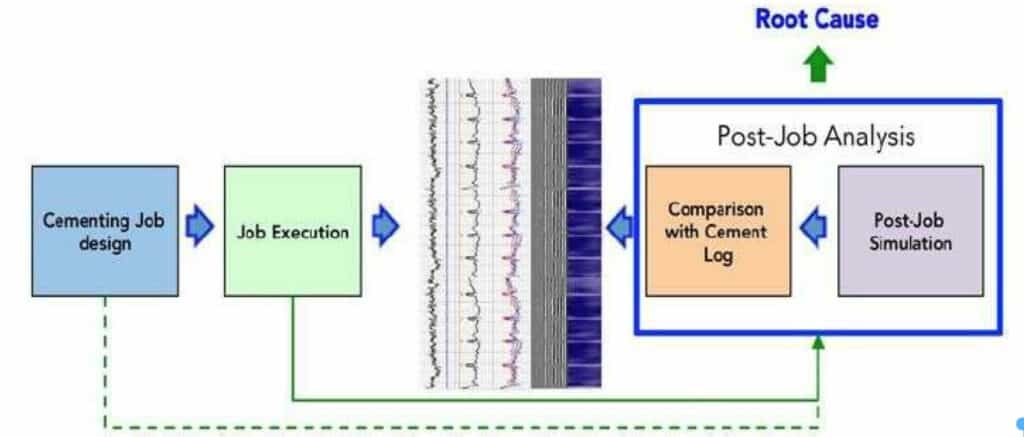
In primary cementing, targeting zonal isolation, the post-job analysis process can be summarized as follows:
Due to the number of variables involved in well cementing, we require references to make post-job analysis a valid exercise.
A commonly accepted reference is found in cement evaluation logs. They are an indirect measurement of zonal isolation and present several challenges, but they become more meaningful when combined with a post-job computer simulation. There are other direct and more practical measurements like pumping pressure and hook-load, but with some limitations, if used alone, particularly in operations, still climbing the learning curve.
Post-job analysis is possible on every single job independently of the quality of its outcome. Still, in practical terms, it requires abilities, time, and dedication values not so available in today’s overloaded teams.
We are in a post-two-consecutive-downturn environment working with smaller teams. We are all under enormous pressure to be successful.
We must achieve objectives and prevent every form of failure (NPT, losses, incidents and accidents). A post-job analysis is most valuable after a failed operation if objectives were not achieved or for incomplete jobs.
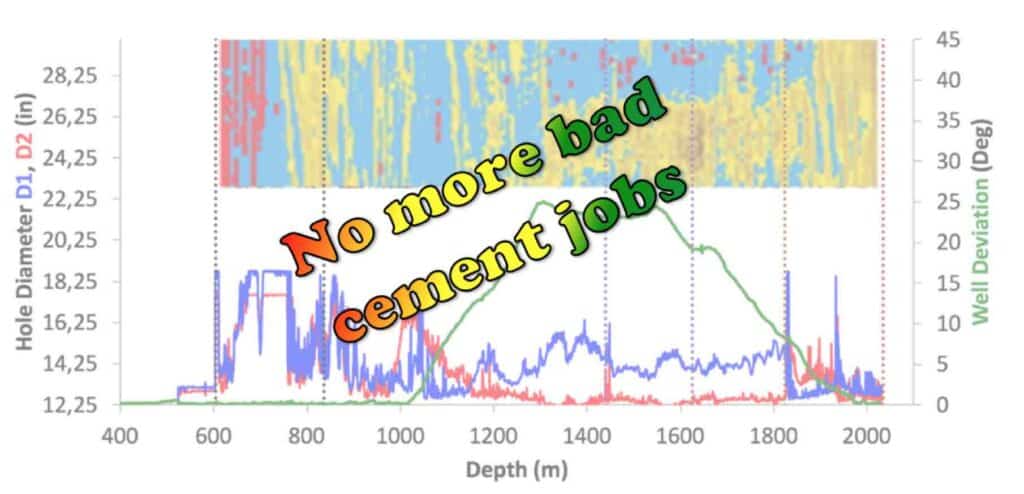
Post-job analysis can convert any past poor cement job into practical actions and solutions to maximize cement coverage and zonal isolation the next time, and over and over.
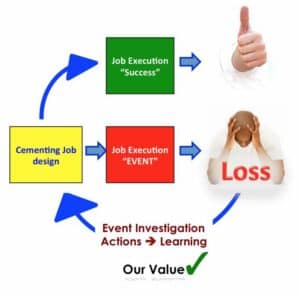
The same methodology inspires my post-job analysis in safety and continuous improvement fields.
I use forensic-like techniques for primary cementing data, from design to evaluation. Data is collected, processed, and organized to build a structured case or model.
Then, the contributions of all the variables can be correlated and understood versus actual job results and evaluation. This all helps us know what to change, replace or adjust to get the job right the first time! The next time.

Post-job analysis removes the “oil-field-mystery factor”; it allows learning ONLY what matters in your operation, forget about generic information, or the so-called “cementing book”, to advance from average or poor cementing zonal Isolation outcomes to the best results.
Here are some opportunities post-job analysis offers:
- No more remedial work and associated NPT during well construction
- Cement it right the first time
- Reduce well constructions costs
- Save rig time and third party utilization
- Optimized cement evaluation costs
- A best practice means … earlier indication of success, do not wait for CBL/USL
- Improve company culture
- Empower employees with knowledge
- Reduce company training needs
- Stop expending in generic training … every post-job analysis exercise means employees learn to implement what the operations need
- Accelerate the learning curve and become a learning organization
- Individually and as an organization
Now, what is in a complete and value-added post-job analysis? The process shall follow the natural way that actions and conditions led to the incident.

Sample post-job sections:
- Job Facts
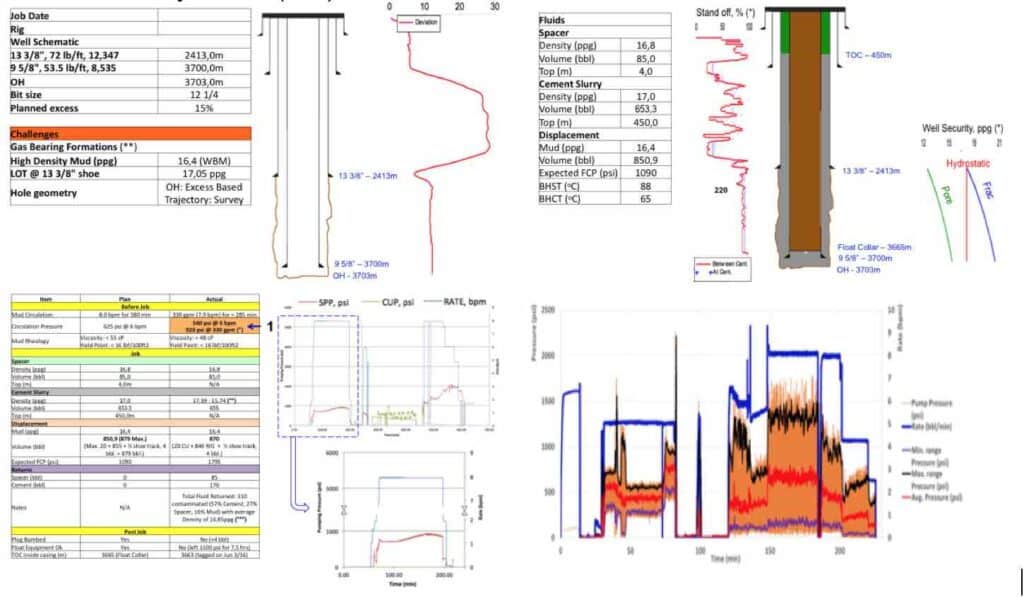
- Job design
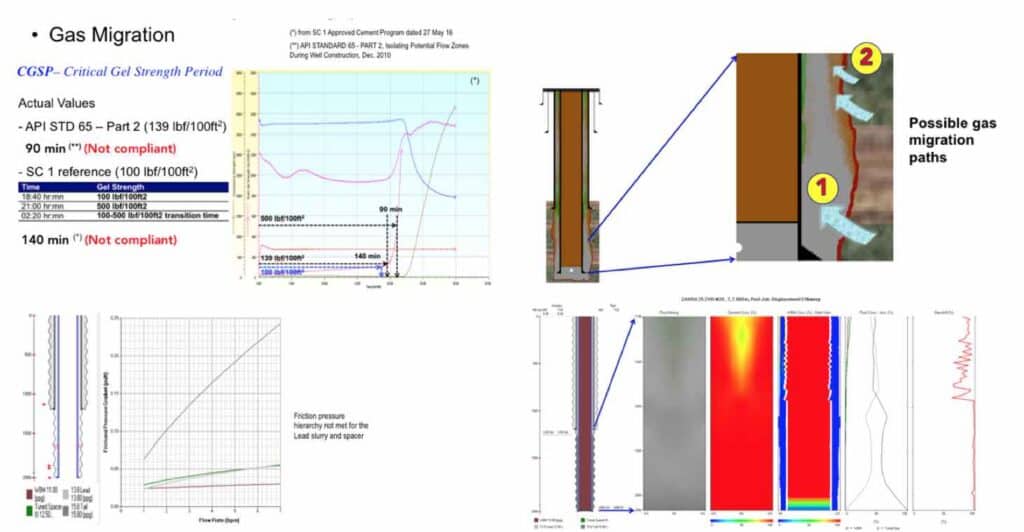
- Model Calibration
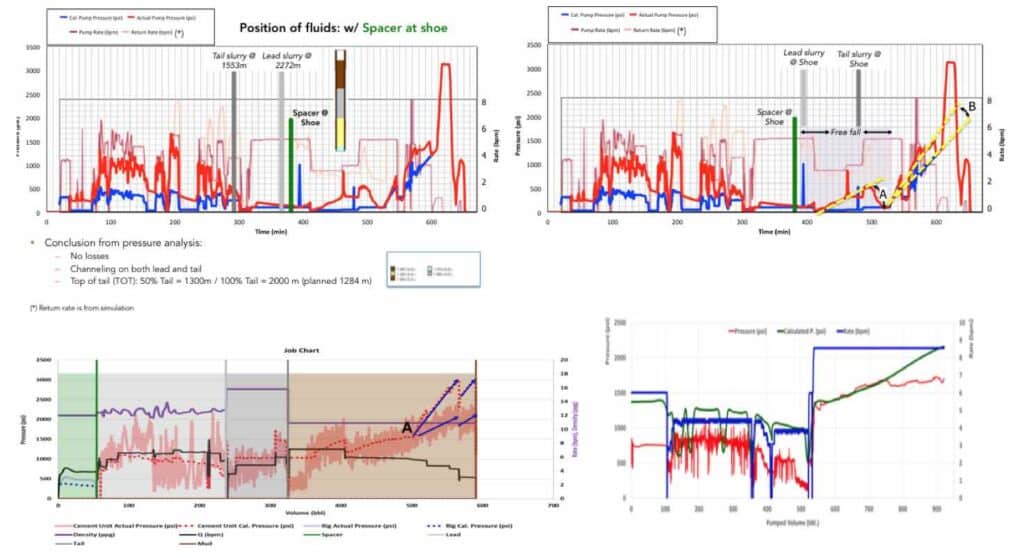
Within model calibration, the job model is updated with actual job data, including fluids rheology, from field measurements and pumping rates, volumes and densities, as recorded by the cementing unit during the job to produce a calculated pumping pressure using simulation software.
This result is then compared against the actual pumping pressure measured value recorded by the cement unit or rig pumps (time log). In most cases, these two curves, calculated and measured pumping pressure, should match during the entire cementing operations.
The most crucial segment is typically the displacement; during this stage, the pumping pressure increases progressively, resulting from its flow up in the annulus. Deviations and differences help to support events such as the difference in hole size, channeling, loss circulation, influxes, fluids incompatibility, annular restrictions and any other event triggering a higher or lower pumping pressure. This stage is a preliminary step to calibrate the simulation model, ultimately generating an estimation of the cement coverage to facilitate understanding of a cement evaluation log.
Log analysis
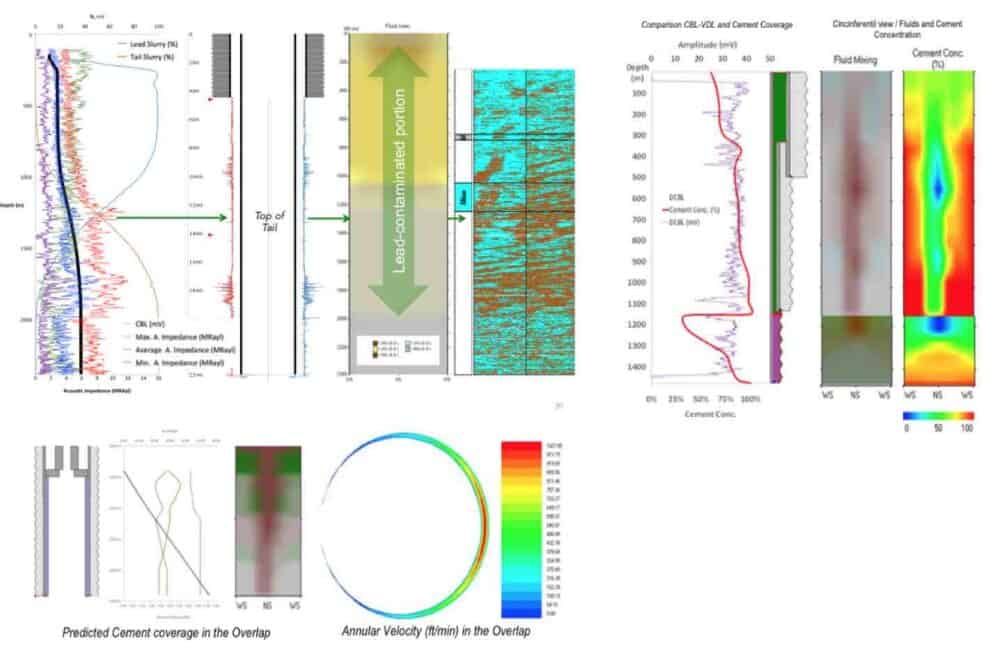
This article is an overview of a proper post-job analysis, and if you need more details or require support to improve your cementing results, please let me know. I will be glad to help.
Cheers
L. Diaz
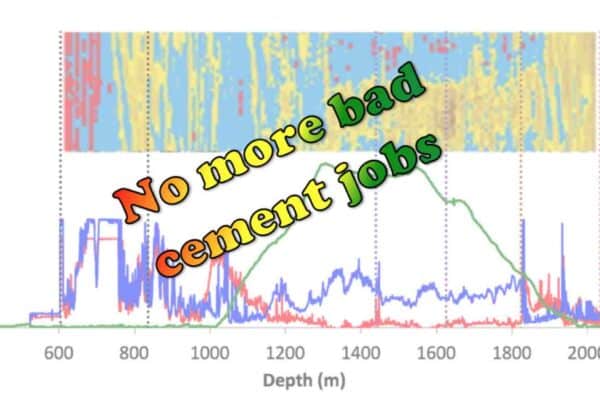

Lenin i would like to know if the curves of cementing graph (rate, pressure, density and total volume) should have an specific color or if we can use the color we want.
Hi Carlos
The idea is to display the data in the best possible visual way